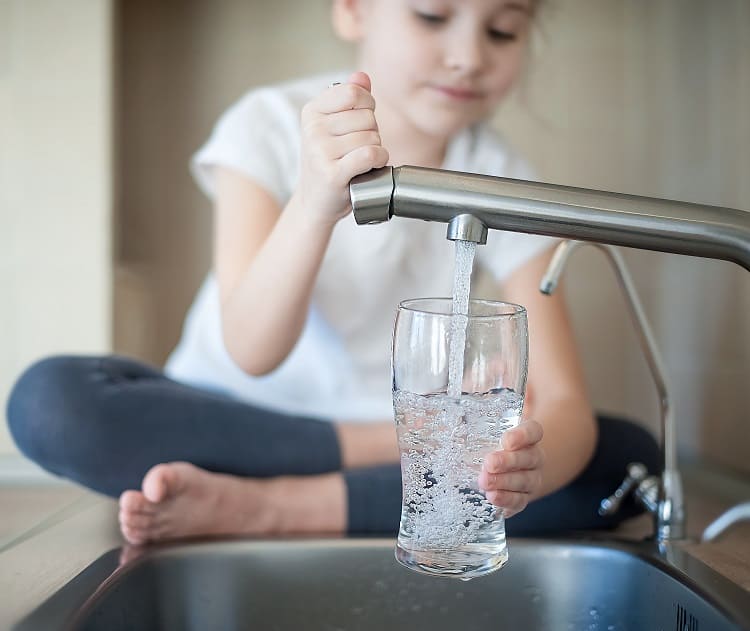There’s no doubt that you can’t survive without water flowing from your taps; it’s one of the basic needs in any homestead. However, with a lot of health risks in the modern world, you have a lot of reasons not to trust external sources. As such, it’s important that you ensure the water is filtered before you start using it in your home.
Many people only install filters to the kitchen’s supply system while leaving the rest as they are. This can be quite dangerous because you’ll still run the risk of coming in contact with the contaminant in one way or another. Therefore, it’s recommended that you install a water filter for the whole house. But how do you go about choosing the right product? Read on to find out more!

1. Type Of Filter Required
Water filters are categorized based on their method of filtration and point of installation. It’s important that you understand this information because using the wrong product might lead to a lot of frustrations. So, the first step is to find out which method of filtration is ideal for your system. There are many determinants here, but the most significant one is the type of contaminants in your water.
For instance, reverse osmosis constitutes a membrane with small pores through which water is forced. In this process, the contaminants are left outside while clean water is collected on the other end. You can check this one out for more information on this type of filter and how it can fit in your supply system.
You’ll also come across filters with activated carbon, activated alumina, or those made of ceramic. Keep in mind that some of them can work perfectly in any system while others are designed for specific types of contaminants.
After selecting a mode of operation, the next step is to know where the filter is being installed. It might seem like an obvious factor, but you’ll be surprised by the number of people that get this wrong. Generally, filters are categorized into two, based on their point of installation–whole-house and point-of-use water filters.
As the name suggests, a whole-house water filter is designed to serve the whole building. It’s usually installed at the inlet where the main supply first gets into your home. One of the main benefits of this filter is the fact that various contaminants are removed at the point of entry. However, it’s expensive and requires professional installation skills.
For this reason, most people opt for the point-of-use filters, which are usually installed at the ‘final destination’ like taps and showers. Here’s a list of point-of-use filters:
- Under-sink filter: installed under the sink in your kitchen to remove bacteria and other pollutants.
- Countertop filter: it’s connected to the faucet (or comes with its own faucet) to purify water whenever you open the tap.
- Showerhead filter: this one is designed for showerheads when you don’t have a whole-house filter installed.
- Water filter pitcher: this a small jug-like tank that has two parts–a filter and container. The former is located at the upper end of the system. A water filter pitcher is the most popular and, perhaps, the cheapest option on this list.
2. Know the Size
With the type of filter in mind, it’s important to understand the right size for your system. If you’re looking for point-of-use filters, the size might not matter too much because faucets and showerheads are quite similar in all homes. However, it’s an important factor when installing a whole-house filter because houses vary in size.
Larger water filters are typically the best because they allow more service interval and increased water supply. But, then again, it’s not wise to invest in a big filter when your house can work perfectly with a smaller size.
Still on the same factor, make sure you consider the port size since it determines the water pressure. This affects the rate of supply into various sections of your home–25 gallons per minute is often the recommended rate for larger households.
3. Check The Manufacturer’s Certification
Water is one thing that can affect every member of a household, both positively and negatively. Therefore, installing a counterfeit water filter means you’re risking the health of everyone living in your home. Apart from the usual contaminants that you’re trying to get rid of, the filter could come with other dangerous chemical substances that might end up affecting your health.
To ensure that you’ll avoid such an ordeal, buy a filter whose manufacturer is certified by the relevant authorities. Thus, the first step towards safety is to purchase all your plumbing emergency needs from a reputable retailer. Even after doing that, make sure you check the seal to see whether the product has been tested and verified by quality assurance authorities.
4. Consider Your Budget
Having checked all the factors mentioned above, the final thing to keep in mind is your budget. Remember, not all expensive products are perfect, and not all cheap items are counterfeit. You can get a favorable deal from reputable stores if you do your research well.
Conclusion
Filters are an essential part of your water supply system. As such, it’s imperative that you take your time finding the right fit for your faucets, showerheads, or main supply.
When making your choice, one of the most important tips to keep in mind is the type of filter you need. The categories here are based on the mode of operation and point of installation. As you make all these decisions, don’t forget to consider your budget.

